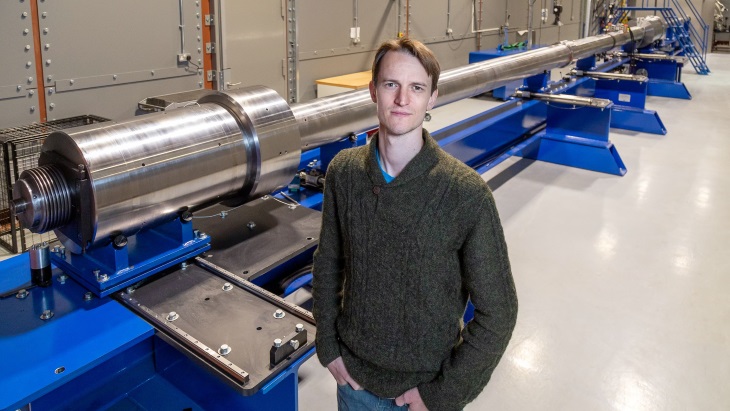A two-stage light gas gun works by converting the energy released from an ignited propellant into the compression of a light gas, usually hydrogen. This produces gas pressures about 10,000 times atmospheric pressure which then launches the projectile.
Weighing 25,000 kg, the new 38 mm gun is the largest of its kind in the UK and it fires a 100 g projectile, which can reach a maximum velocity of 6.5 km/s or 14,500 mph - 20 times the speed of sound - using up to 3 kg of gun powder. Such ‘hyper velocity’ devices are typically used by astrophysicists to simulate meteorite impacts, and a similar gun was used to test the panels on the International Space Station to ensure it could withstand impact from small objects travelling at massive speed.
The gun will be used in parallel with First Light Fusion’s ‘Machine 3’ and will allow engineers to explore a different parameter space by launching larger but slower projectiles. It will be housed in a specifically constructed 10 mm steel clad facility within the company’s headquarters in Oxford, known as the Citadel.
Nick Hawker, CEO of First Light Fusion, said "Our fusion technology is driven by the impact of a projectile travelling at significant speed into a fusion target. These targets trade pressure and size, amplifying the pressure from initial impact to final collapse of the fuel capsule, which is a small part of the whole target. This new gun will deliver lower pressure than Machine 3, so we will have to rely on designs that amplify more. The larger size means we can do this and still get good performance. With both facilities together we can make more than twice as much progress on the most important aspect of our technology, which is the target."
The investment follows a recent USD25 million funding round backed by global institutions, including IP Group PLC & OSI.
The two-stage gas gun project took 10 months from concept design to delivering a fully operational test facility.






_63865.jpg)
_18570.jpg)
_16159.jpg)





